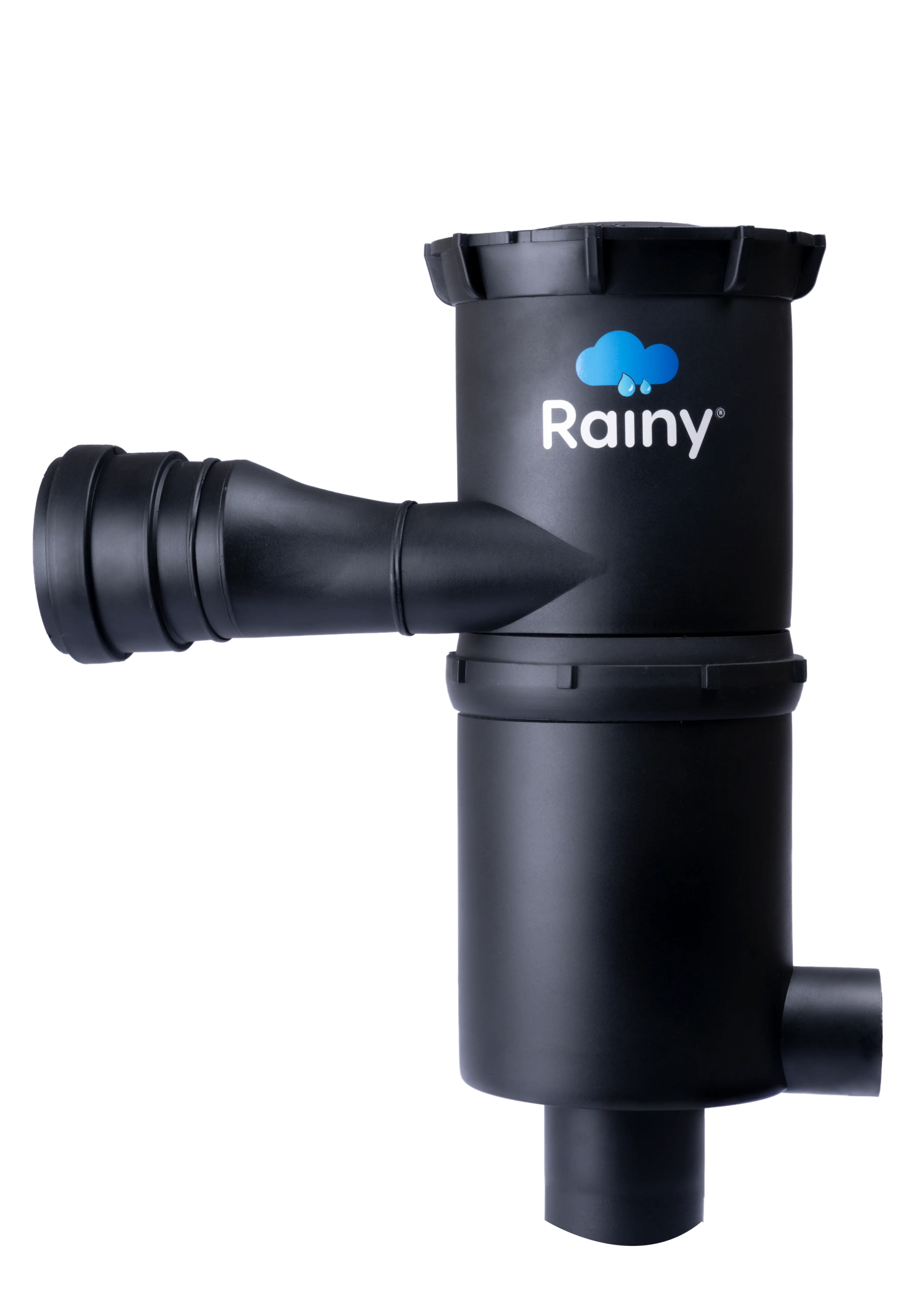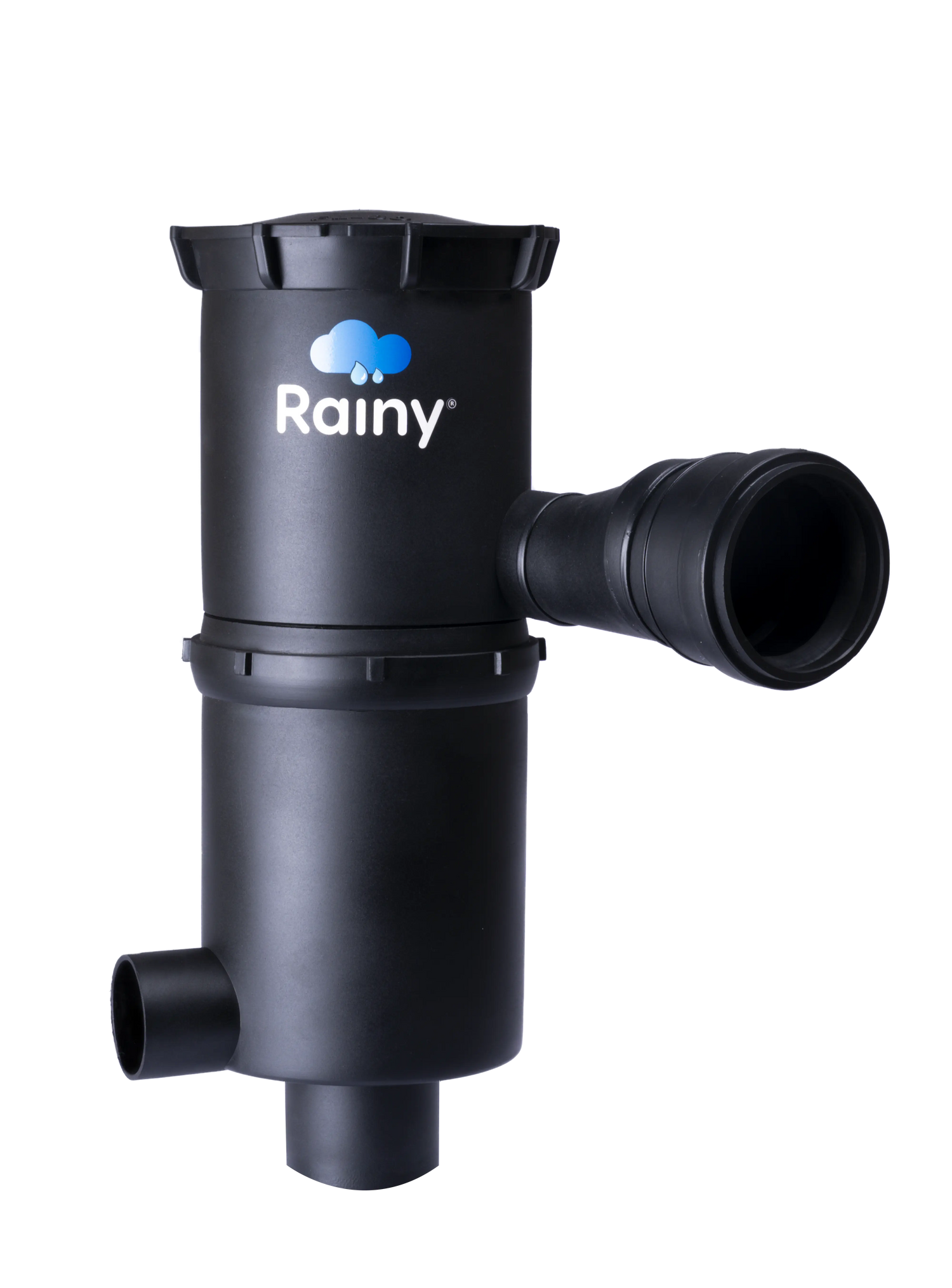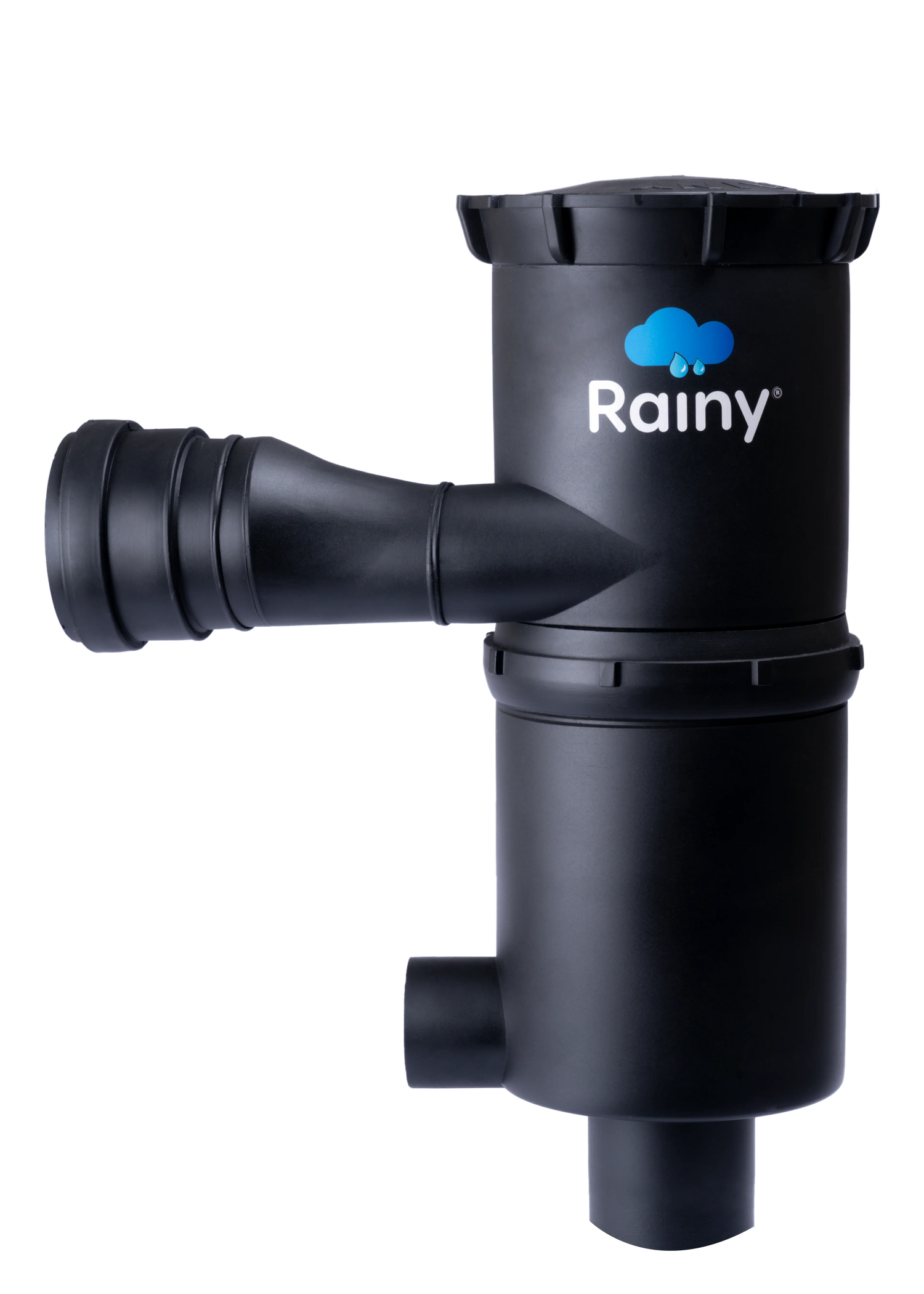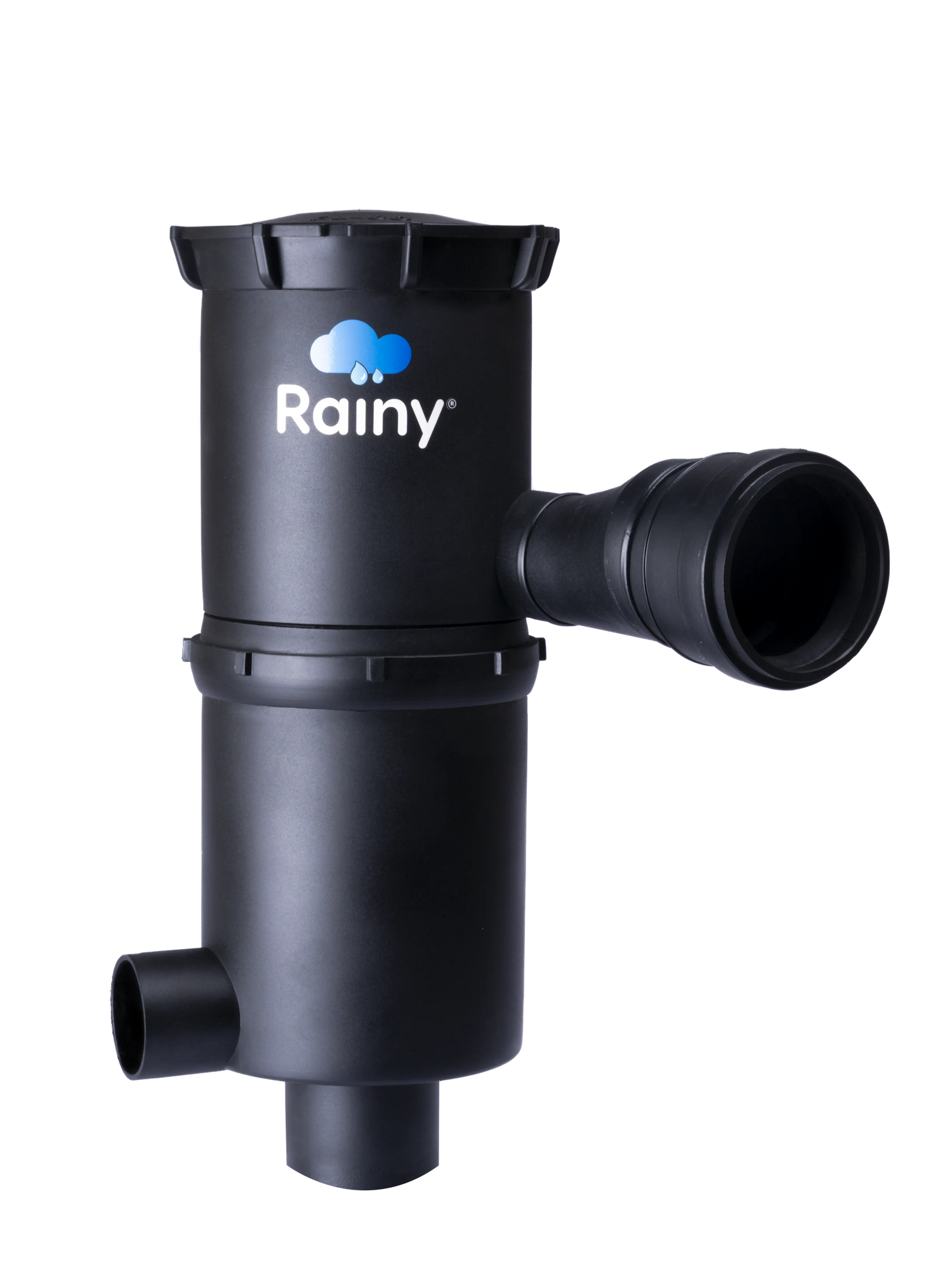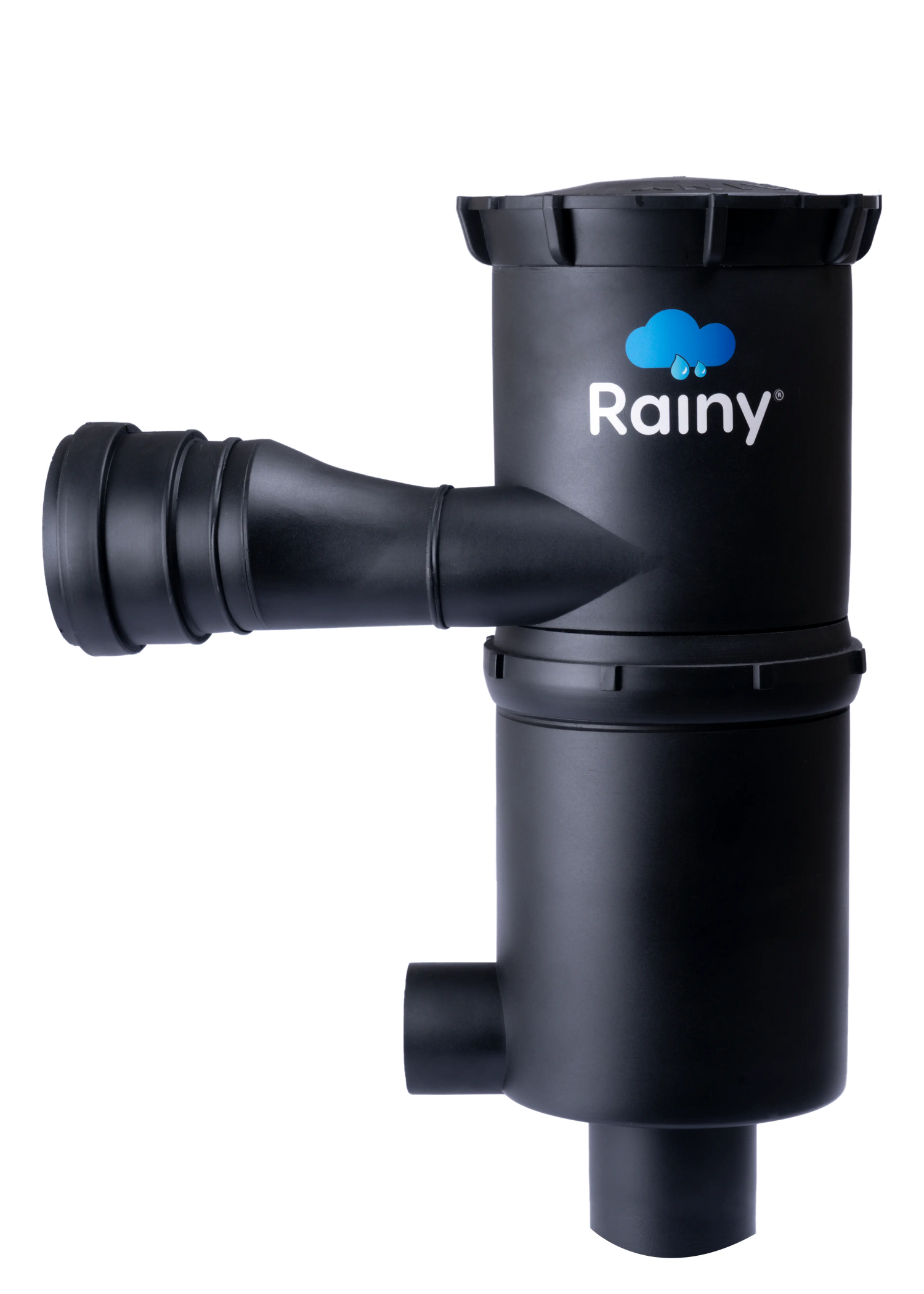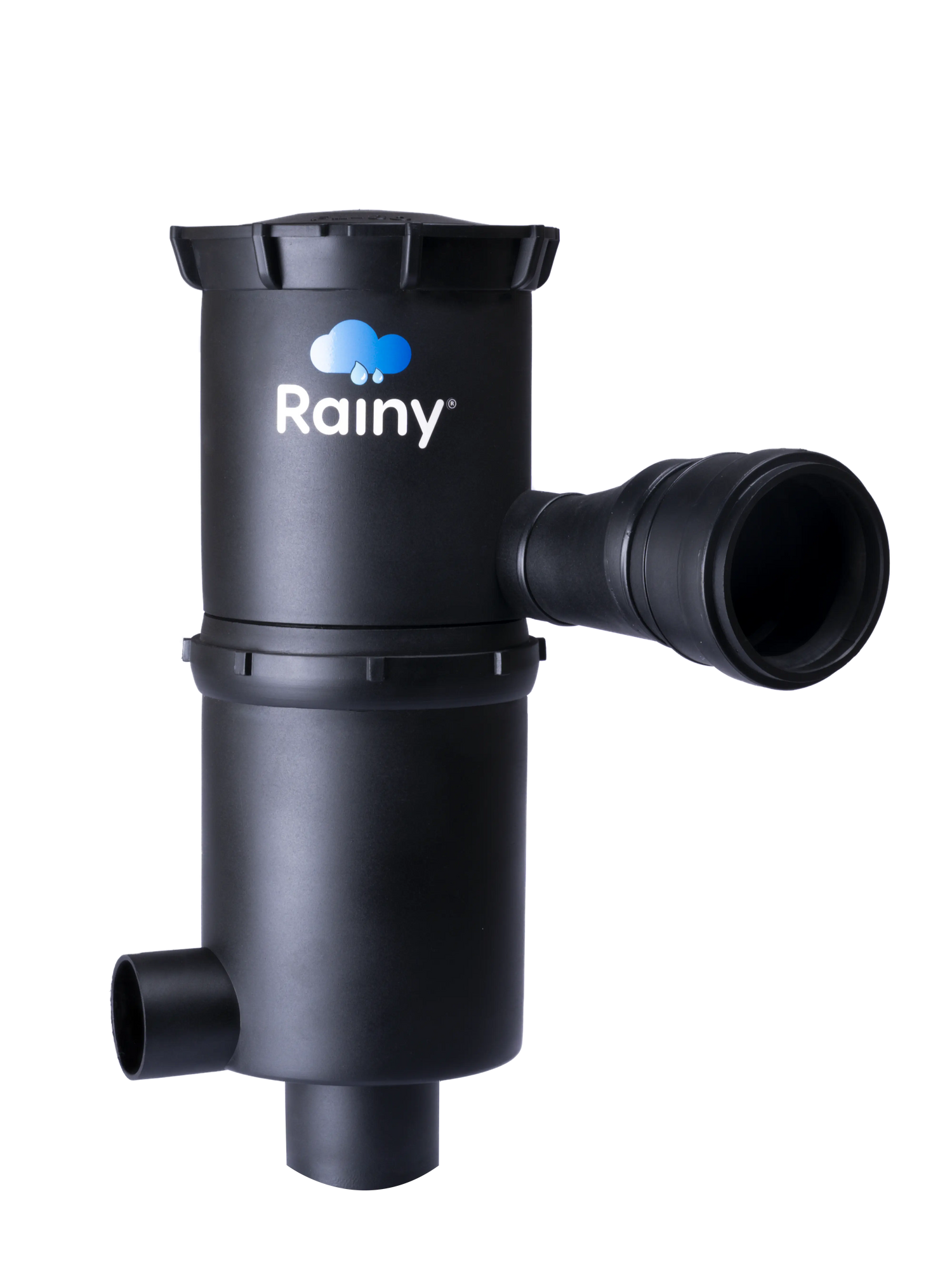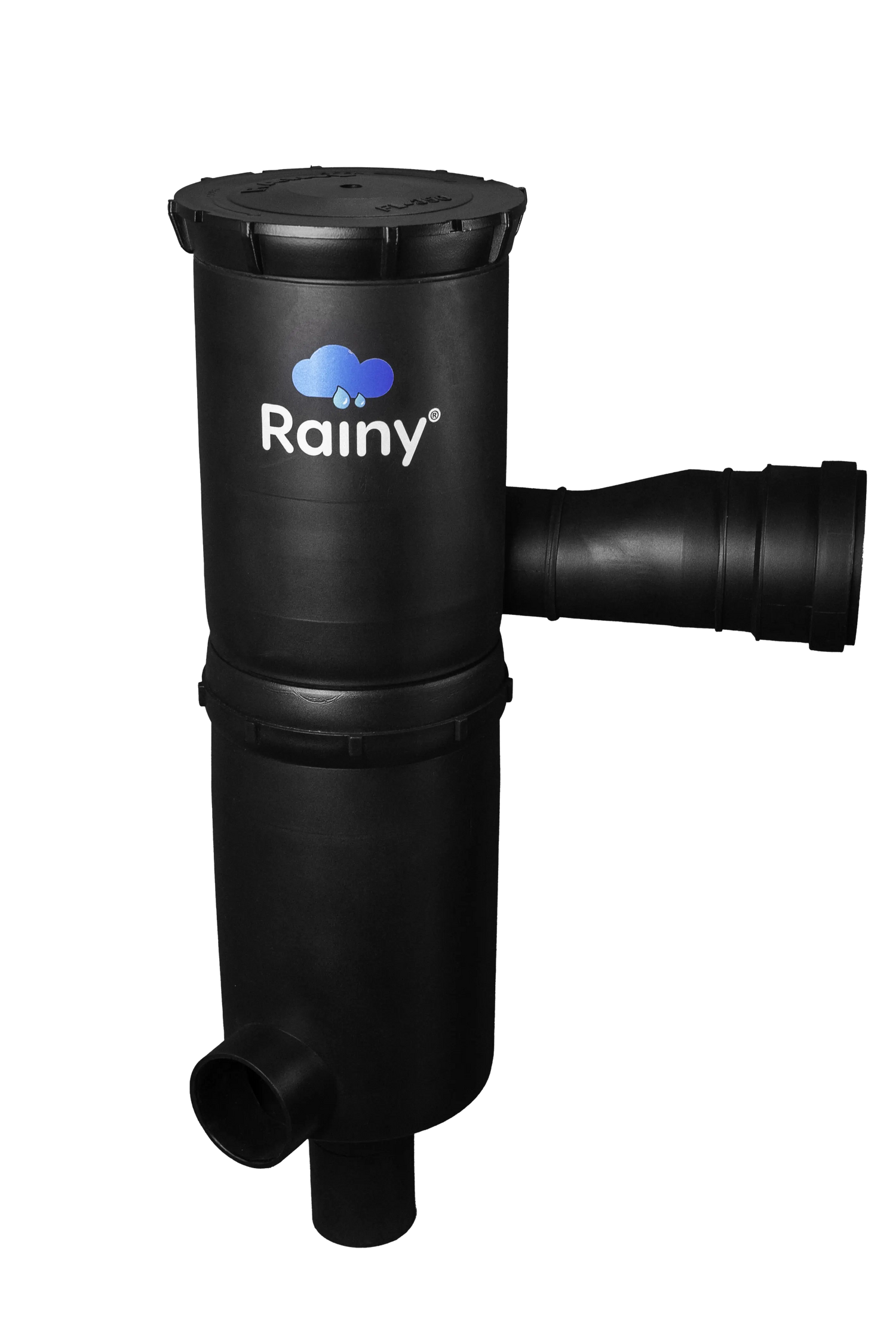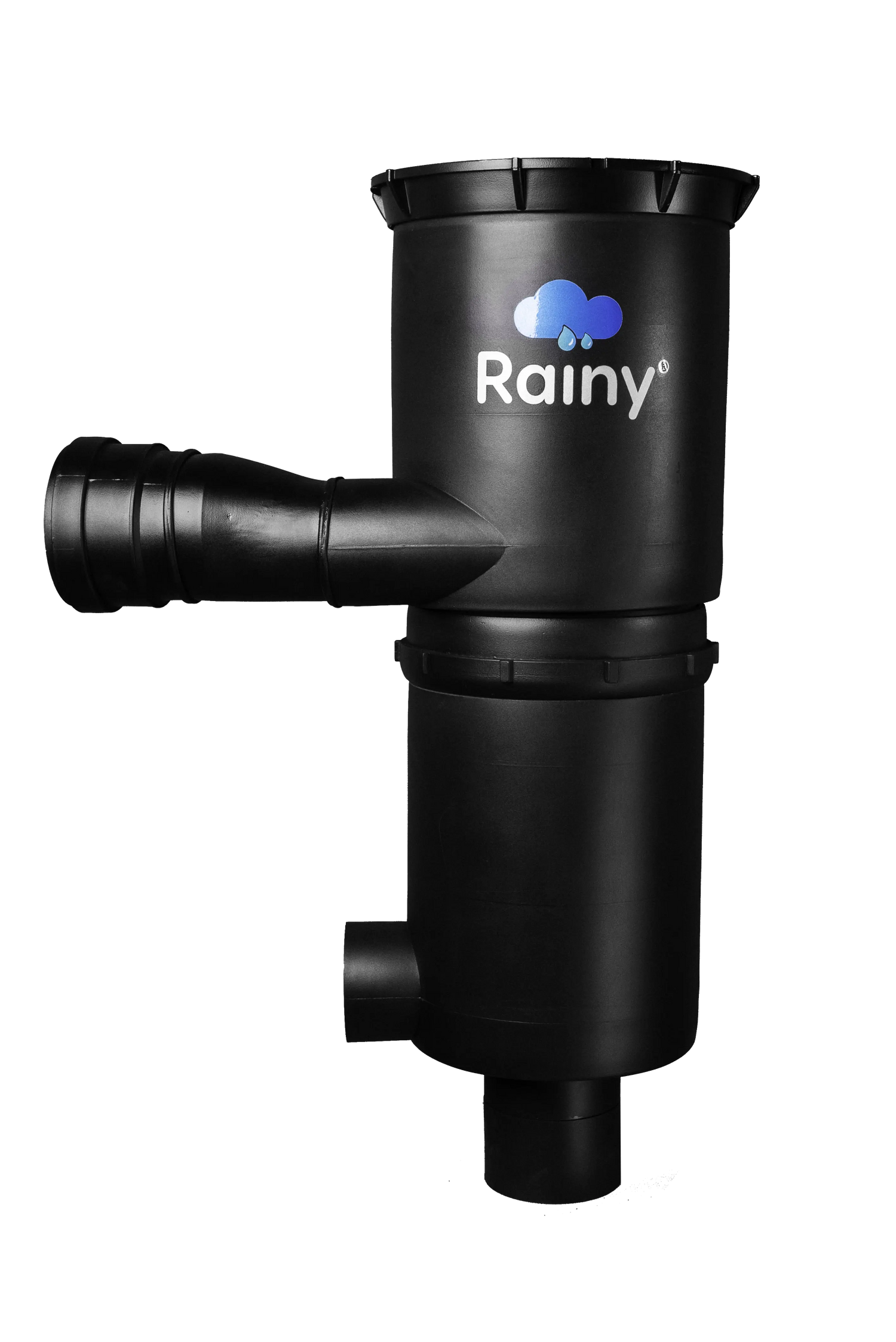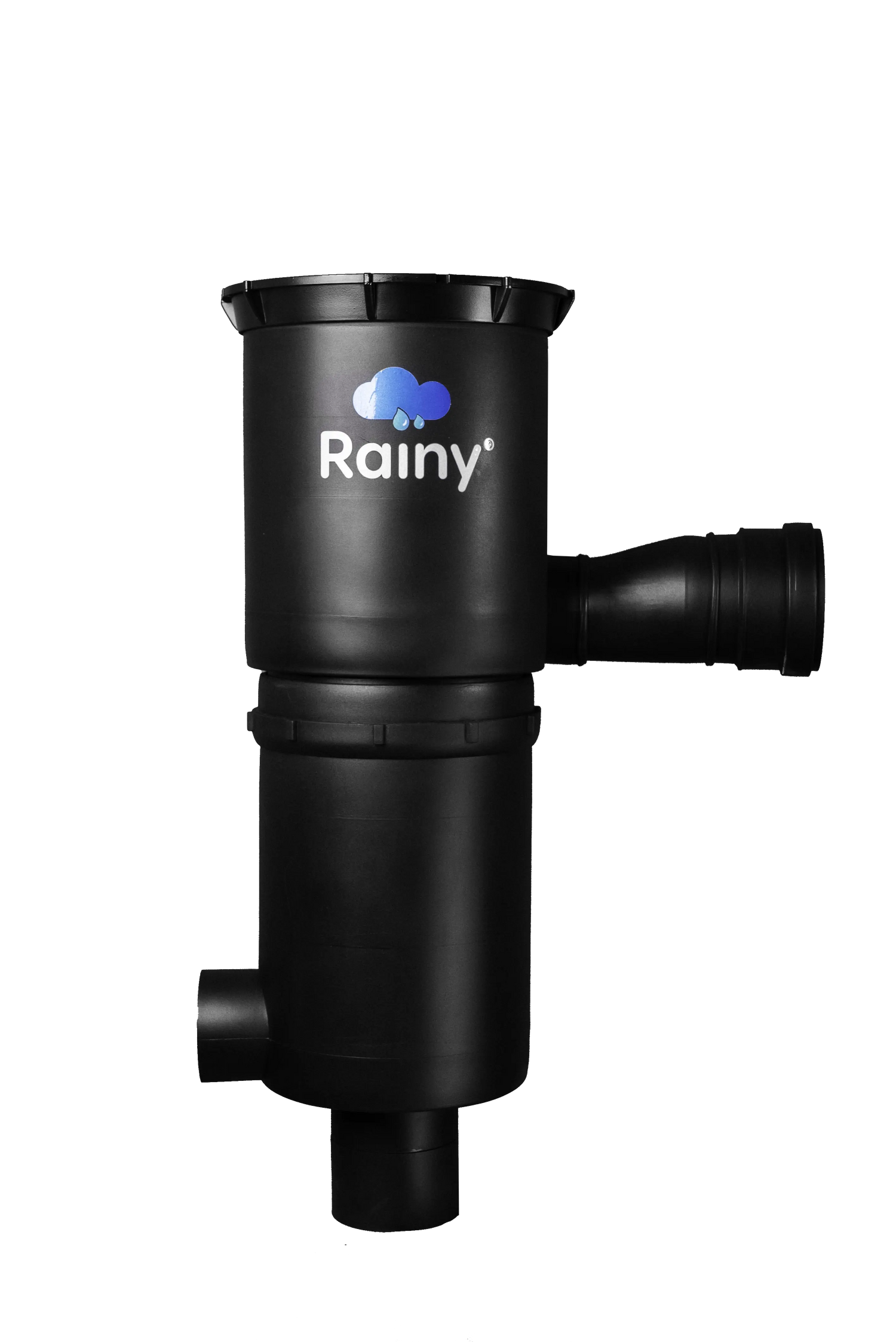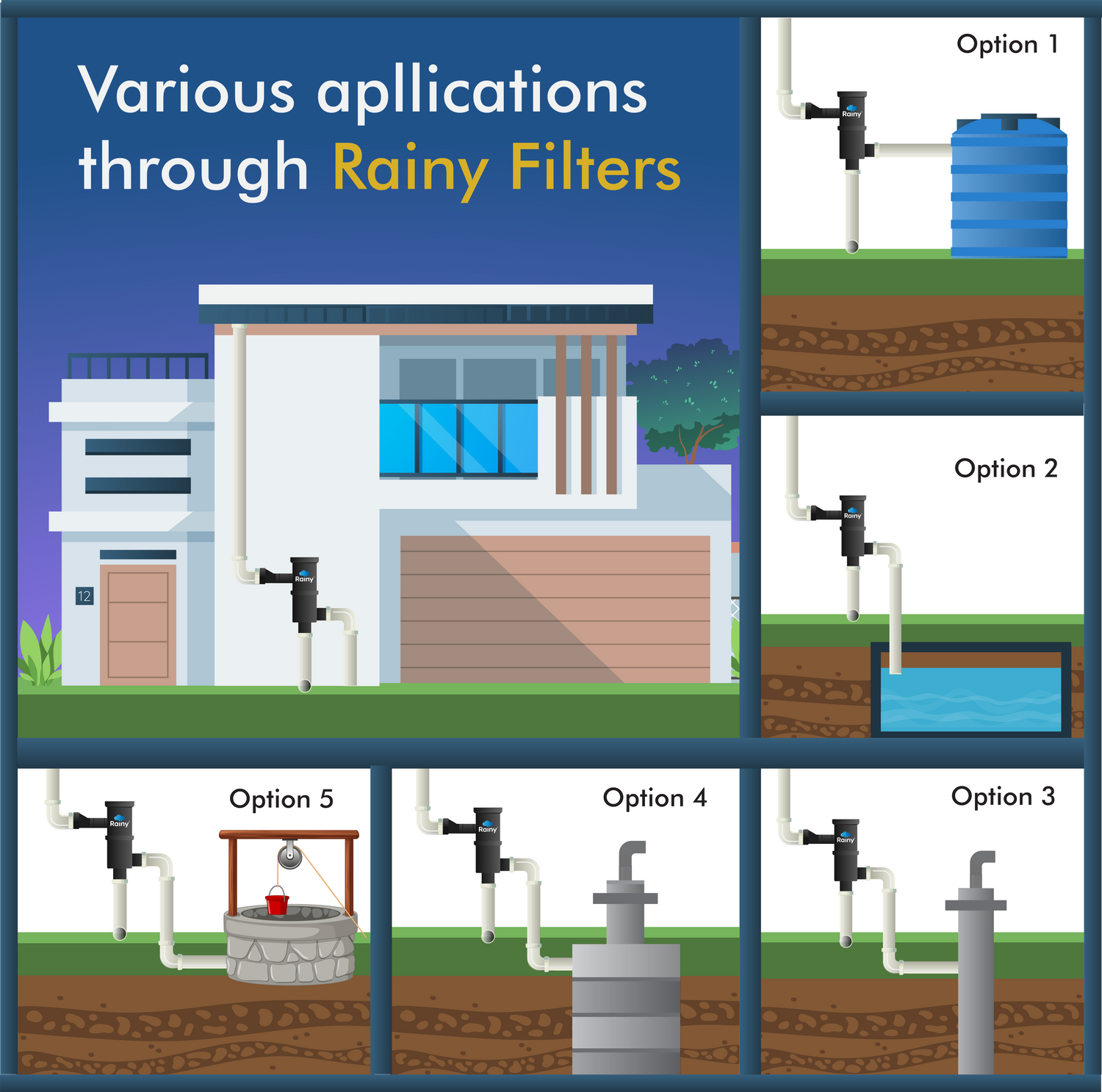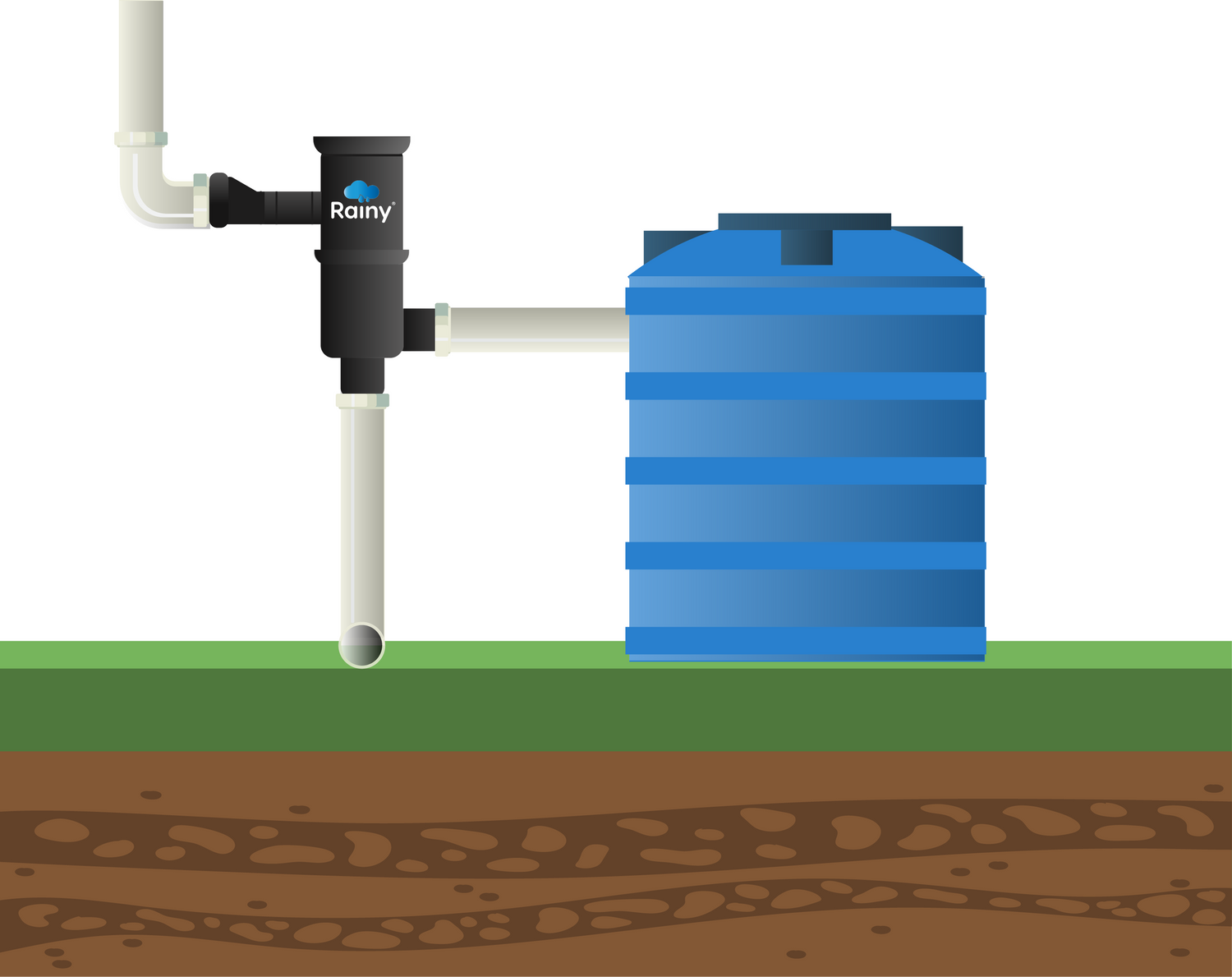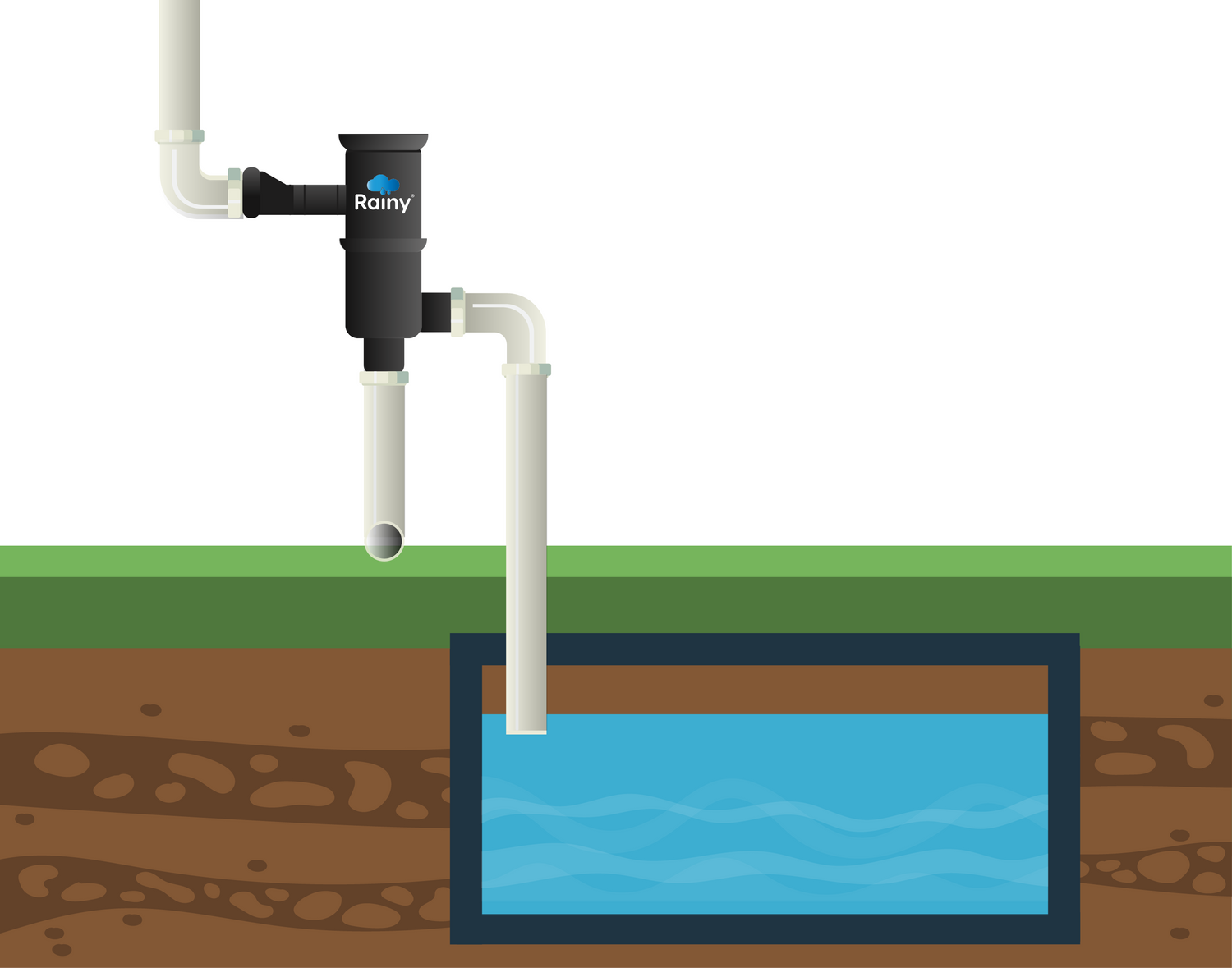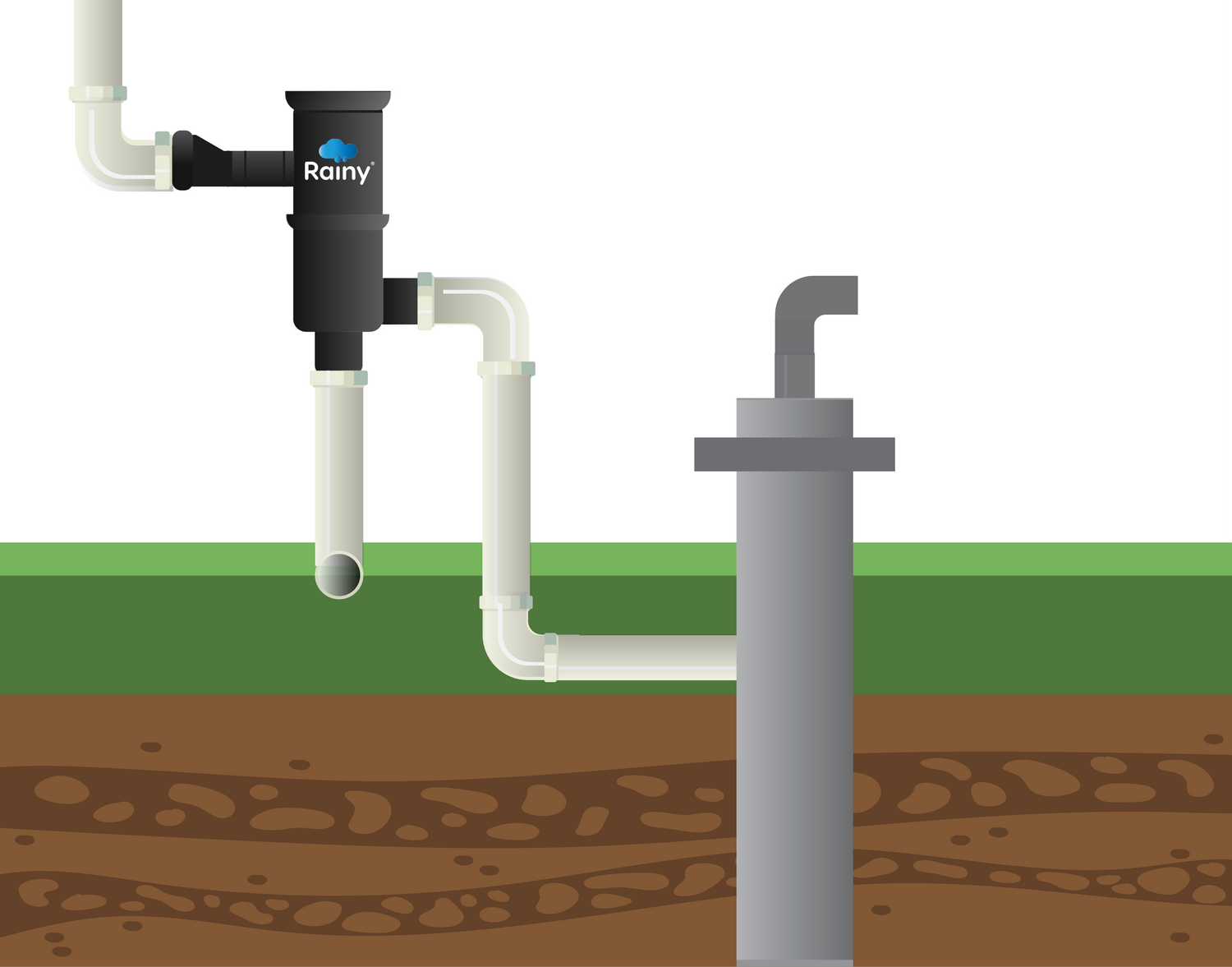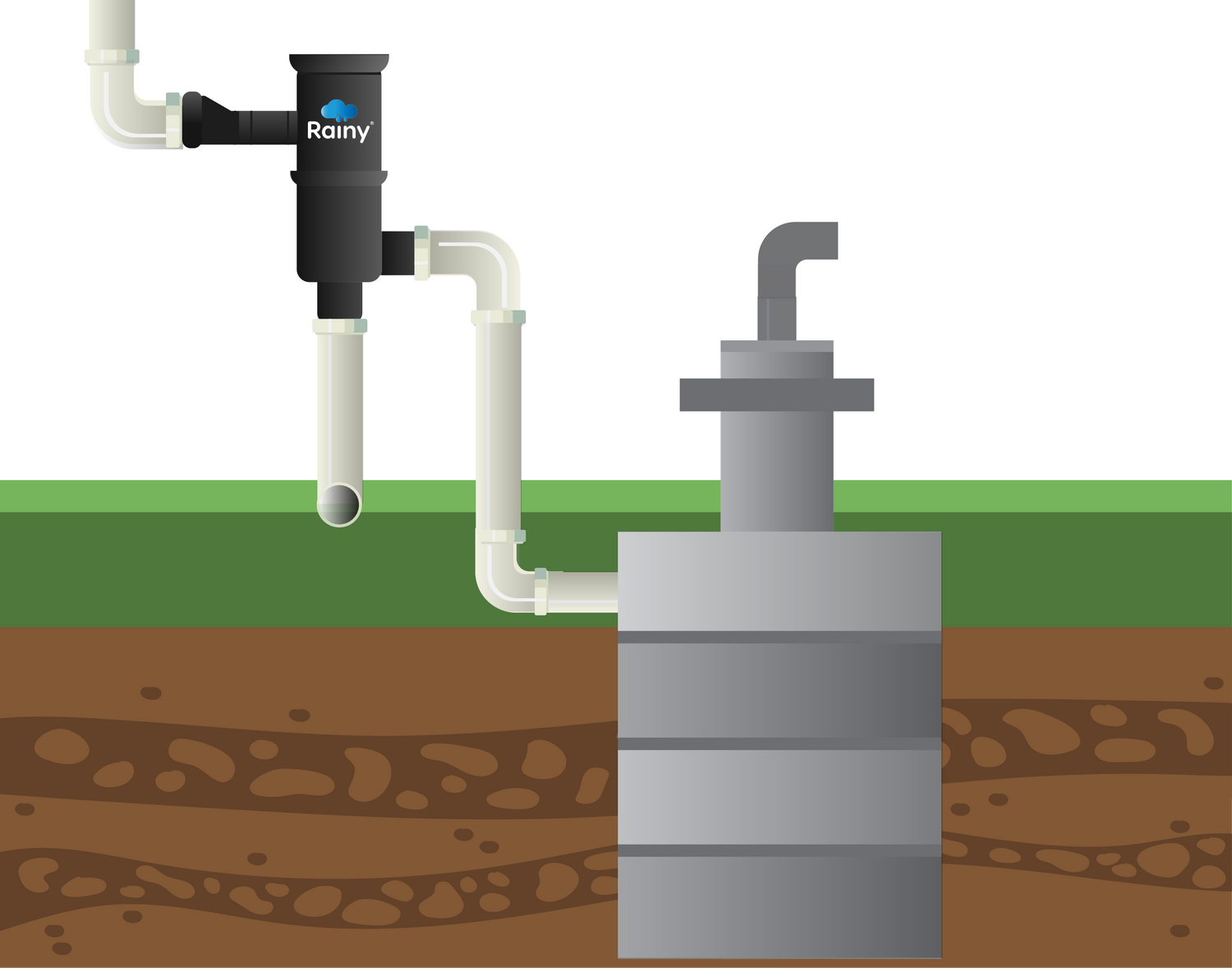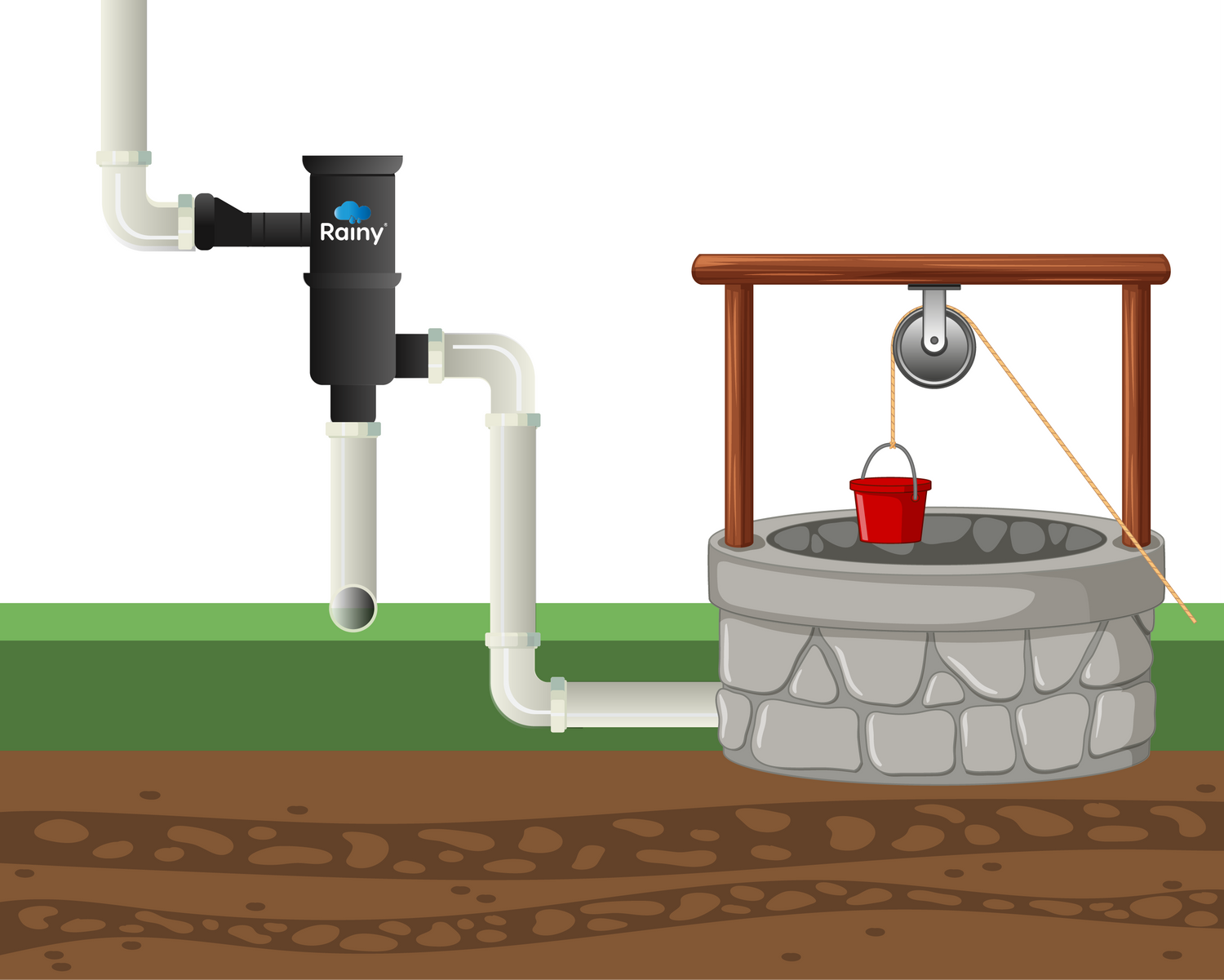Dual Intensity Rooftop Rainwater Harvesting Filters
Leading Self-Cleaning Rainwater Filters in the World.
5 products
Filter
Self Cleaning
Rainy’s self-cleaning filters ensure high efficiency and minimal maintenance, eliminating the need for frequent manual cleaning.

Dual Intensity
Our filters are designed for high efficiency, seamlessly managing any intensity of rain, from a light drizzle to heavy downpours.

Easy to Install
Easy installation supported by a detailed instruction manual and installation video, ensuring any local plumber can handle it with ease.

Low Maintenance
Our filters are built to last, offering long-term reliability and easy maintenance with minimal effort.
Application
Once filtered through Rainy Filters, the water can be stored for reuse in various applications such as gardening, washing, or domestic needs, or redirected to recharge groundwater, ensuring efficient and sustainable water utilization.
SAVE RAINWATER
☆
STORE & REUSE
☆
RECHARGE BOREWELLS
☆
SAVE RAINWATER
☆
STORE & REUSE
☆
RECHARGE BOREWELLS
☆
SAVE RAINWATER
☆
STORE & REUSE
☆
RECHARGE BOREWELLS
☆
SAVE RAINWATER
☆
STORE & REUSE
☆
RECHARGE BOREWELLS
☆
FAQ
Find answers to common questions about our self-cleaning rainwater filters, installation, maintenance, and how they help you save thousands of liters annually.
1. How does a Rainy filter work?
🡪Rainy filters work on dual working principles depending on the intensity of the rain. During periods of light rainfall, it relies on "cohesive force," and during periods of heavy rainfall the filter automatically switches over to "centrifugal force". These filters require no external energy; they rely solely on gravity.
2. What filter is best for rainwater harvesting?
🡪It is recommended to purchase self-cleaning filters to avoid frequent manul maintenance and to look for high-efficiency filters. Here at Rainy, we have designed a cost-effective, self-cleaning, dual-intensity filter that operates at a high level of efficiency.
3. What is Rooftop rainwater harvesting?
🡪Rooftop rainwater harvesting is the practice of collecting and storing rainwater that falls on rooftops for later use. This involves capturing rainwater from rooftops and directing it into a storage system such as a tank, cistern, or underground reservoir after passing it through a filter apparatus. Rooftop rainwater harvesting systems typically include a gutter system to collect rainwater from the roof and downspouts or pipes to channel the water to a storage tank. The collected water is then treated and filtered as needed for its intended use.
4. How to install RAINY Filters?
🡪Rainy filters are simple to install and are wall mountable units. 360-degree union rotation capability make Rainy filter suitable for any site conditions. It can be easily wall mounted, self-installable with easy to understand instructions make it user friendly or any local plumber with minimal experience is sufficient for installing.
5. How often should I maintain Rainy Filters?
🡪Rainy filters do not require routine maintenance because they are self-cleaning and auto-flushing systems. Nevertheless, we recommend inspecting filters once a year and clean the filter before the rainy season.
What our customers are saying?
Rainwater Filter Installation & Products
Efficient Rainwater Harvesting Solutions
At Rainy Filters, we offer professional installation services and high-quality and best Rainwater Filters in India to help you make the most of every drop of rain. Our solutions are ideal for homes, apartments, and commercial establishments, ensuring clean, filtered water while promoting sustainability. Whether you are looking for Rainwater Harvesting Filters or a full Rainwater Purify System, we provide durable and reliable products with easy installation.
Why Choose Rainwater Filter Installation Services?
Our installation service ensures your filter system works efficiently from day one. With expert guidance, proper placement, and testing, we guarantee optimal performance for long-term use. Installing a Self self-cleaning rainwater Filter has never been easier, reducing maintenance and ensuring uninterrupted water collection.
We also provide high-quality Rainwater Harvesting Accessories to complement your filter system, making the setup more efficient and helping you get the most out of your rainwater harvesting project.
Explore Our Range of Rainwater Filters
- Rainy Filter FL 80 – Perfect for small homes and compact setups, this model efficiently filters rainwater for daily household use.
- Rainy Filter FL 150 – Ideal for medium-sized homes or apartments, providing consistent filtration and easy maintenance.
- Rainy Filter FL 250 – Designed for larger properties, it handles higher water flow while ensuring clean water output.
- Rainy Filter FL 350 – Suitable for commercial buildings or multiple households, offering high capacity and robust performance.
- Rainy Filter FL 500 – Our heavy-duty model for large-scale water harvesting projects, ensuring maximum filtration and reliability.
Our filters are designed to work seamlessly with various rainwater harvesting Methods, helping you implement the most effective techniques for water collection and storage.
Benefits of Our Rainwater Filters
- Best Rainwater Filter in India – Our filters are designed with high-quality materials and advanced technology to provide efficient water filtration. They are built to last, ensuring long-term durability and consistent performance in every rainfall.
- Rainwater Filter for Home – These compact filters fit seamlessly into any residential setup, making installation simple and hassle-free. They provide clean, filtered rainwater for everyday household use, supporting sustainable living.
- Water Harvesting Filter – Our filters help you capture, store, and utilise rainwater effectively, reducing dependency on traditional water sources. They promote eco-friendly water conservation while maintaining high water quality.
- Reliable Performance – With our Best Rainwater Filter System, you get consistent and uninterrupted water collection. Each system is engineered to deliver clean water efficiently, even during heavy rainfall or prolonged use.
These solutions integrate perfectly into a full Rainwater Harvesting System, providing an end-to-end solution for sustainable water management in homes, apartments, and commercial buildings.
How Our Rainwater Harvesting Filter Installation Service Works?
- Site Assessment: We carefully examine your property to determine the best location for your rainwater purify, considering roof size, water flow, and storage capacity. This ensures maximum efficiency and effective water collection.
- Custom Recommendations: Based on the assessment, we help you select the most suitable filter model – FL 80, FL 150, FL 250, FL 350, or FL 500 – customized to your household or commercial needs. This guarantees the right capacity and performance for your property.
- Professional Installation: Our experienced team installs the Rainwater Filter System accurately, ensuring all components are properly fitted and aligned. This precise installation maximizes the filter’s effectiveness and longevity.
- Testing & Maintenance Tips: After installation, we test the system to confirm it functions flawlessly and provide guidance on using self-cleaning features. This helps maintain consistent performance with minimal effort over time.
FAQ’s:
1. Which Rainy Filter model is suitable for my home?
Smaller homes often need FL 80 or FL 150, while larger properties may require FL 250, FL 350, or FL 500.
2. Do Rainy Filters require frequent cleaning?
No. Our filters have self-cleaning technology, reducing the need for regular maintenance.
3. Can Rainy Filters be used for commercial buildings?
Yes. FL 250, FL 350, and FL 500 are perfect for commercial and institutional setups.
4. How long does a Rainy Filter last?
With proper installation and use, Rainy Filters are durable and provide years of reliable service.
5. Why should I choose Rainy Filter installation service? Our expert team ensures proper placement, correct installation, and optimal system performance, maximizing the lifespan and efficiency of your filter.
Get Started with Rainy Filters
Make your rainwater harvesting project easy and efficient with our professional Rainy Filter Installation Services. Explore our full range of filters, from Rainy Filter FL 80 to FL 500, and start collecting clean, sustainable water today.
Explore all Rainy Filters and Rainwater Harvesting Spare Parts to keep your rainwater harvesting system durable, efficient, and long-lasting.
Shop Rainwater Harvesting Filters Online
Rainy Filter FL 80| Rainy Filter FL 150| Rainy Filter FL 250| Rainy Filter FL 350| Rainy Filter FL 500
Find Rainwater Harvesting Spare Parts
rainwater harvesting Ballvalve| rainwater harvesting Bellow| Rainy filters Bush| rainwater harvesting Cleaning Brush| rainwater harvesting Filter cap| rainwater harvesting Filter element| rainwater harvesting L-clamp| rainwater harvesting Strap| rainwater harvesting Wall bracket|
